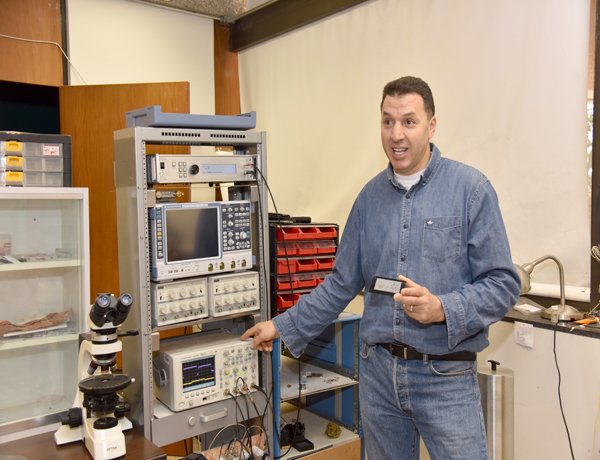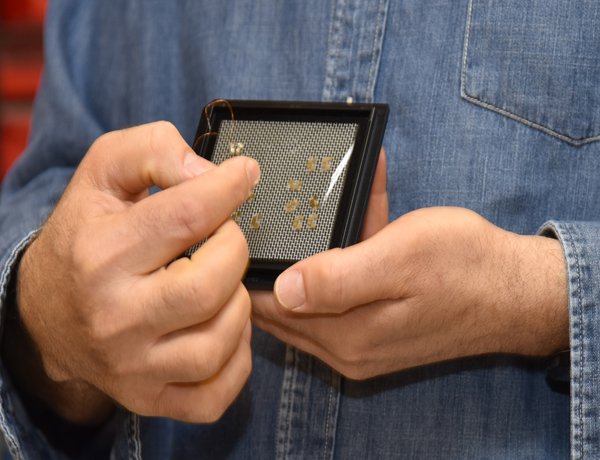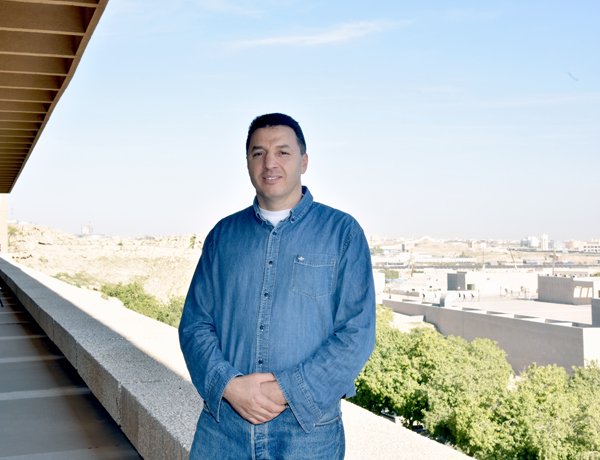Earned 3 patents: A research project to develop quantum computing technology
Feb. 27, 2020 | ResearchThe idea of developing quantum-computing technology began more than two decades ago, however, the quantum computer was not developed because of its complex structure quantum circuits transmit information via photons other than classical circuits, requiring knowledge of how to build the physical hardware and software that supports it. Now, the recent innovations of many technology companies are approaching technology with the emergence of new boundaries and applications of quantum computing. Quantum computing is essentially physics. A process takes advantage of the strong ability of subatomic particles to be present in more than one state at any time. Because of the way these particles behave, operations can be performed more quickly and use less energy than classical computers.
The single photon detector using superconducting nanowire (SSPD) in the infrared regime is attracting the focus of many researchers. It has a potential application in quantum communication, quantum encryption, and in building a quantum computer. However, its sensitivity and efficiency remain challenging issues, and further developments are needed before it is ready for commercialization. This device as stated needs improvements such us, optimization of the design, the material being used.

A superconducting material has the property of vanishing resistivity once cooled down below its critical temperature (Tc). For the superconductor, each two electrons are bound in pairs known as Cooper pairs, which carry the electrical current. This contrasts with a normal metal, where normal electrons assist the electrical current. The superconducting sample was designed by Prof. Harrabi and fabricated by Cryostar in the USA. It is being investigated at KFUPM, where it is cooled down below its critical temperature using an apparatus called cryostat.. The work consists of creating a localized spot in non-equilibrium regime of the superconducting filament with an electrical pulse. On increasing further the applied current amplitude, a normal localized zone spot appears in the filament for a current larger than the critical current Ic. It is detected as a voltage that appears after a certain delay time. This zone is a dissipative normal resistive spot of a few micrometer sizes, where the electrical energy is dissipated as heat, and is evacuated toward the substrate. From these measurements, the superconducting gap relaxation time is deduced, and the heat escape time can be deduced, which gives important information about the reset time of the SSPD. It is a time during which the SSPD is insensitive to the new upcoming photon. One of the important aspects of this research is the material studied, which can be used as a basic material for application in single photon detection device.
Prof. Harrabi measured the sensitivity of niobium titanium superconducting of single photon detector. This research work is very important and has the advantage of measuring the superconducting gap relaxation. In addition, it has the advantage over the existing techniques of measuring the reset time of the SSPD in pulse mode. Because of the uniqueness and originality of this related work three US patents were recently issued to Prof. Harrabi as a sole author.

Prof. Harrabi measured the sensitivity of niobium titanium superconducting of single photon detector. This research work is very important and has the advantage of measuring the superconducting gap relaxation. In addition, it has the advantage over the existing techniques of measuring the reset time of the SSPD in pulse mode. Because of the uniqueness and originality of this related work three US patents were recently issued to Prof. Harrabi as a sole author.

Prof. Khalil Harrabi has developed his own research lab in the physics department since he joined King Fahd University of Petroleum and Minerals (KFUPM) more than 10 years ago. He acquired his experience in France as a graduate and PhD student, then in the UK as a research officer when he joined a project funded by the European Commission for Quantum Computing using electrons on liquid helium. He later joined the Nano Electronics Research Laboratories Corporation (NEC: Nippon Electrical Company) Japan, where he worked in the same field of research using superconducting flux qubit for quantum computing. In addition, he has continued to work on a topic of current interest, toward single photon detection using superconducting wire, at KFUPM. He is active in this area, and he has many funded projects. He has published many journal papers, and gave an oral presentation at prestigious conferences in the USA and Europe. Recently, he published a paper: K. Harrabi, Measurement of the Gap Relaxation Time of Superconducting NbTi Strips on a Sapphire Substrate, Appl. Phys. A, 125, 751 (2019). This research work has attracted the attention of Prof. Klaus Neumann for its originality and importance, it was suggested that he publishes his research in ‘Superconductor Week, Commercialization Markets. Products Business Developments. R&D . Cryogenics``. This journal reports on the major novelty, originality and breakthrough of research in superconductivity.This work was selected along with additional elaborated, original research at many well-known institutions, such as Intel, Max Blank Institute, Devices that will be used for NASA, ASG Superconductors USA Inc.
Prof. Harrabi is thankful to Dr. Abdullah Sultan, the Dean of Scientific research at KFUPM, for encouraging and urging him to publicize his work and KFUPM in this interesting publication.



